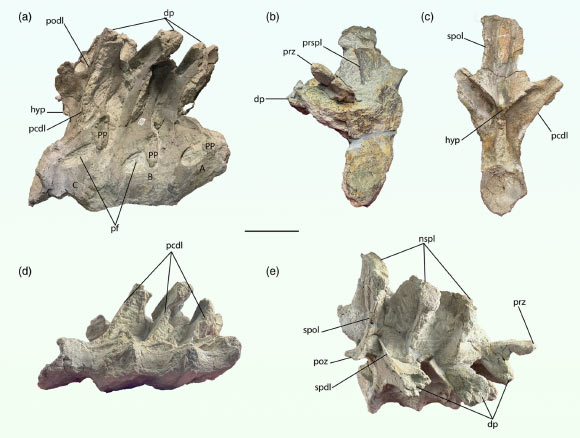Paleontologists from the Western University of Health Sciences, Brigham Young University, the Arizona Museum of Natural History and Auburn University have described a new specimen of Haplocanthosaurus based on bones excavated from the Dry Mesa Dinosaur Quarry near Delta, Colorado, the United States.
Haplocanthosaurus is a small genus of intermediate sauropod dinosaurs that lived during the Late Jurassic period, 155 to 152 million years ago.
Only two members of the genus are currently known: Haplocanthosaurus delfsi and Haplocanthosaurus priscus.
“Haplocanthosaurus is an enigmatic sauropod from the Upper Jurassic Morrison Formation of the American West,” said Western University of Health Sciences paleontologist Mathew Wedel and colleagues.
“Haplocanthosaurus is known from far fewer individuals (approximately 11 specimens) compared to many of the more famous Morrison Formation sauropods, such as Apatosaurus, Diplodocus, and Camarasaurus, all of which are known from parts of more than 100 individuals.”
“Furthermore, important parts of the skeleton such as the skull, forelimbs, and manus and pes either have not been recovered, or have not been described to date.”
“As a genus, Haplocanthosaurus has appeared in a number of phylogenetic positions,” they added.
“Studies have recovered it as a basal diplodocoid, a basal macronarian, or possibly just outside Neosauropoda, indicative of an unstable position in sauropod phylogeny.”
“However, most recent studies have converged in recovering Haplocanthosaurus as a basal diplodocoid.”

The new specimen of Haplocanthosaurus was found at the Dry Mesa Dinosaur Quarry near Delta, Colorado.
It consists of three anterior dorsal vertebrae, four isolated posterior dorsal vertebrae, and a right tibia.
“The new individual of Haplocanthosaurus is identified based on the presence of dorsally angled transverse processes, tall neural arch peduncles, and a broad distal tibia,” the researchers said.
It is the…
Read the full article here

